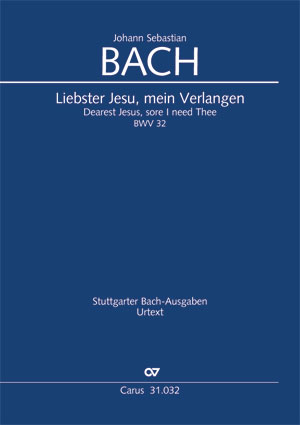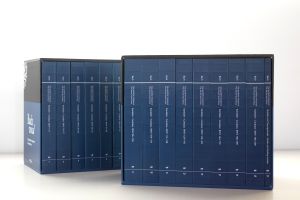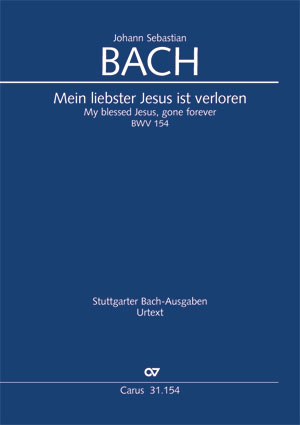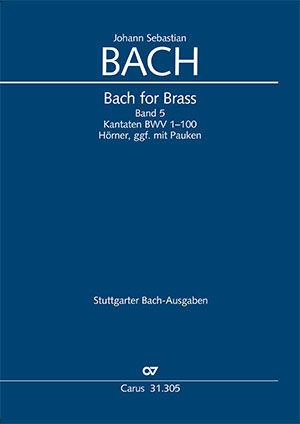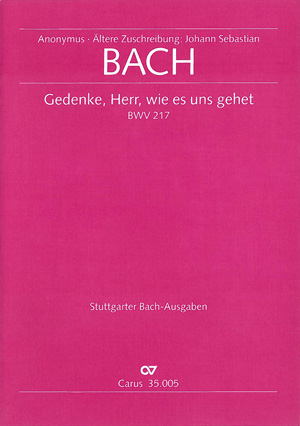Liebster Jesu, mein Verlangen
Cantate pour le 1er dimanche après l'Epiphanie BWV 32, 1726
The text of the cantata "Dearest Jesus, sore I need Thee" for the 1st Epiphany Sunday 1726 was written by the Darmstadt poet Georg Christian Lehms. It is conceived as a dialog between Jesus and the Faithful Soul. Bach titled his cantata "Concerto in Dialogo" and accordingly, it is structured as a dialog between soprano and bass, set in the voice types that were – not only for Bach – typically used for the soul (soprano) and Jesus (bass). The cantata is based on the narrative of the twelve-year-old boy Jesus in the temple; however, in spite of closely following the gospel text, it is interpreted more widely here: it is through Jesus that the believer finds God’s dwelling. Bach creates a great arch from the opening aria full of yearning and searching through to the joyful duet "Nun verschwinden alle Plagen." He himself added the four-part closing chorale to the text model, thus communicating the sense of joyous certainty to the congregation of believers.
Acheter
Informations complémentaires sur l'œuvre
-
Compositeur
Johann Sebastian Bach
| 1685-1750Jean Sébastien Bach compte parmi les compositeurs essentiels de l'histoire de la musique occidentale. Il faisait partie d'une grande dynastie de musiciens, dont furent originaires nombre de musiciens municipaux et d'organistes dans les régions de Thuringe et de Saxe.
Bach vocal
Depuis la fondation des Éditions Carus en 1972, la publication des oeuvres de Johann Sebastian Bach revêt une importance particulière. En 2017, année du 500e anniversaire de la Réforme, nous avons clôturé le projet Bach vocal. L'intégralité de la musique vocale sacrée de Bach est désormais disponible en éditions modernes des textes originaux, matériel d'exécution compris. Une édition globale de toutes les partitions dans un coffret de grande qualité est aussi proposée. Plus d'information sur la personne
-
Éditeur
Hans Grischkat
| 1903-1977
-
Parolier/Librettiste
Georg Christian Lehms
-
L'auteur de l'avant-propos
Karin Wollschläger
Questions fréquentes sur l'œuvre
 Il n'y a pas encore de questions et réponses concernant cette œuvre ou vous n'avez pas trouvé la réponse à votre question sur l'œuvre ? Cliquez ici et envoyez votre question spécifique à notre service clients.
Il n'y a pas encore de questions et réponses concernant cette œuvre ou vous n'avez pas trouvé la réponse à votre question sur l'œuvre ? Cliquez ici et envoyez votre question spécifique à notre service clients.


